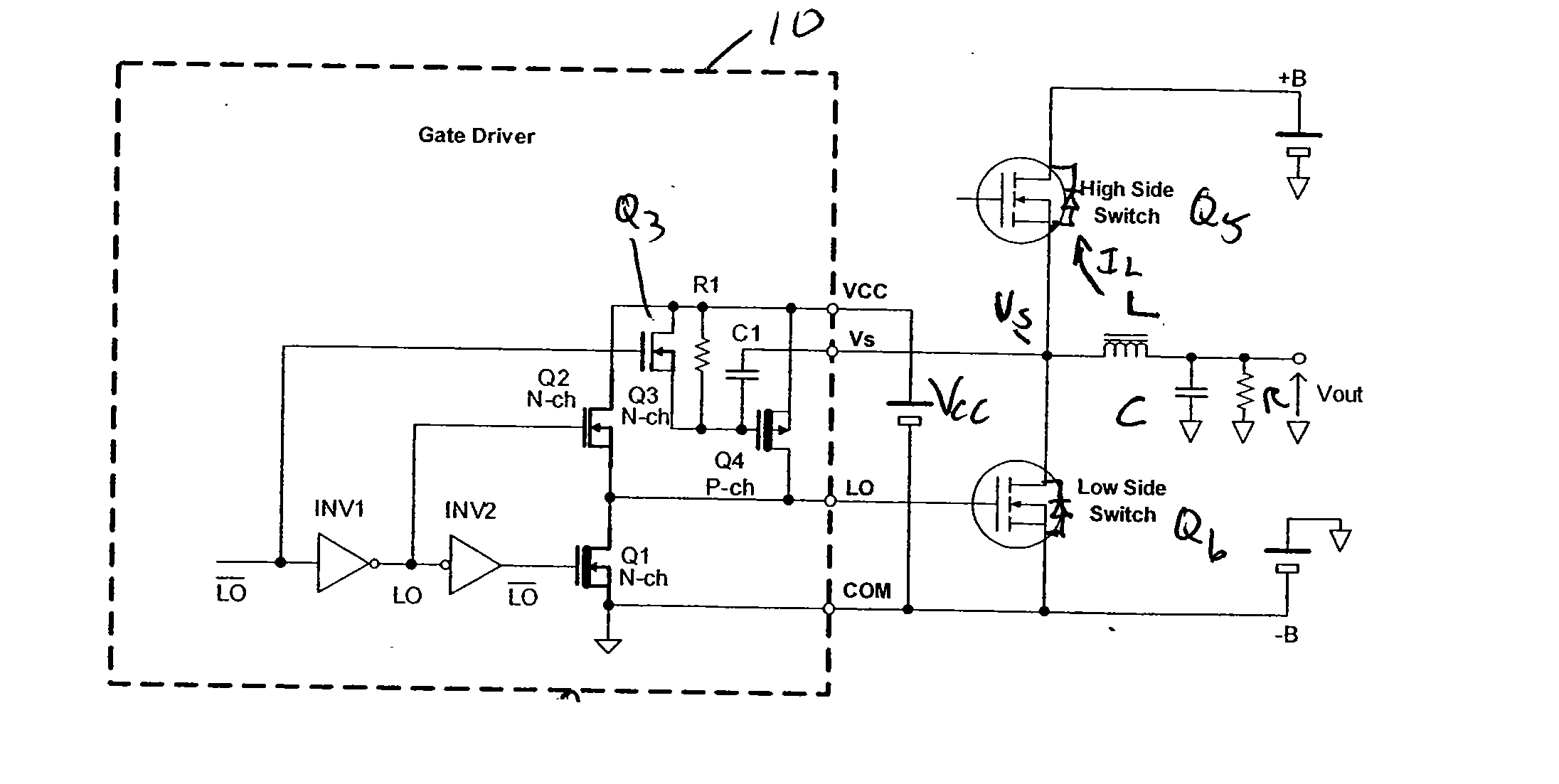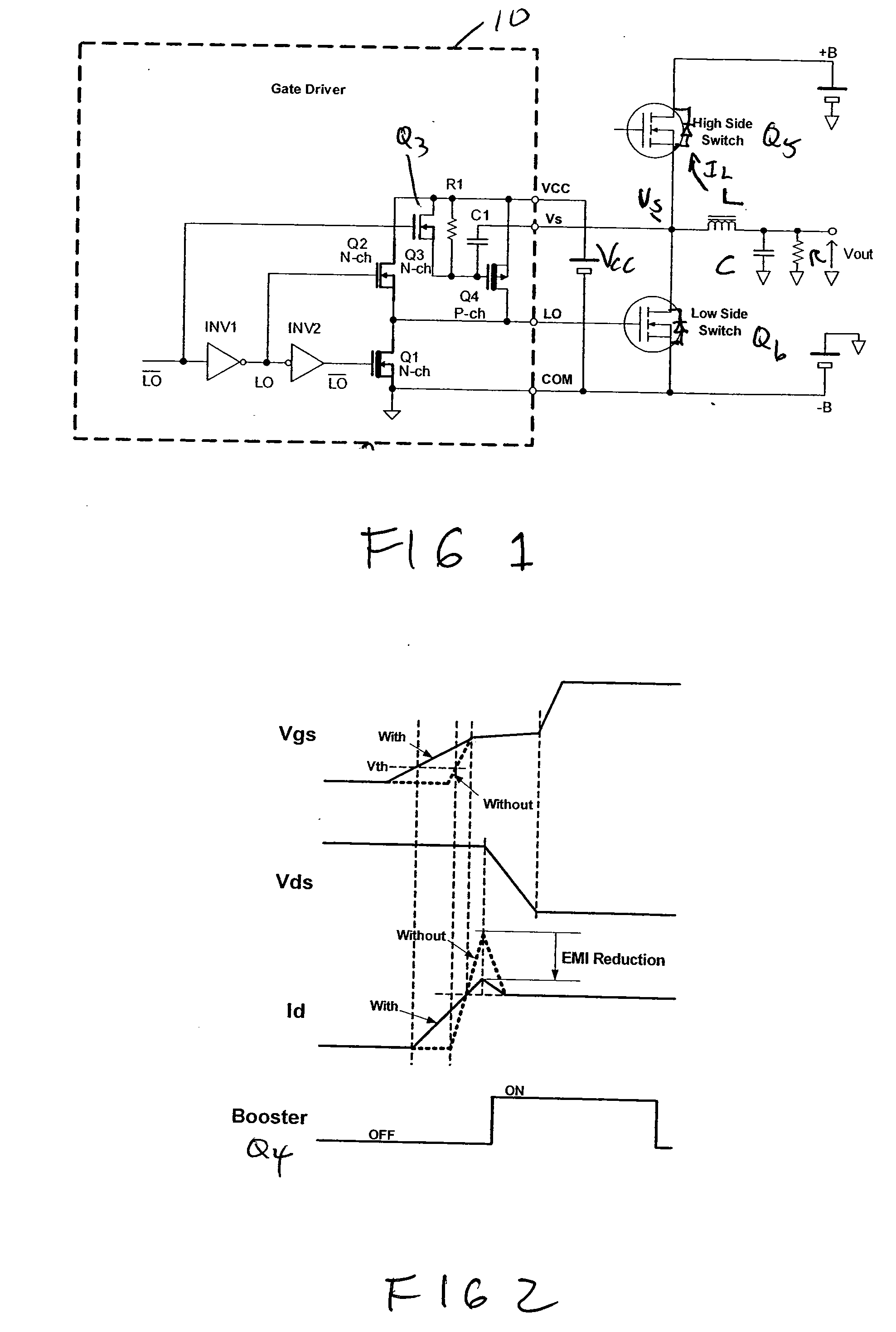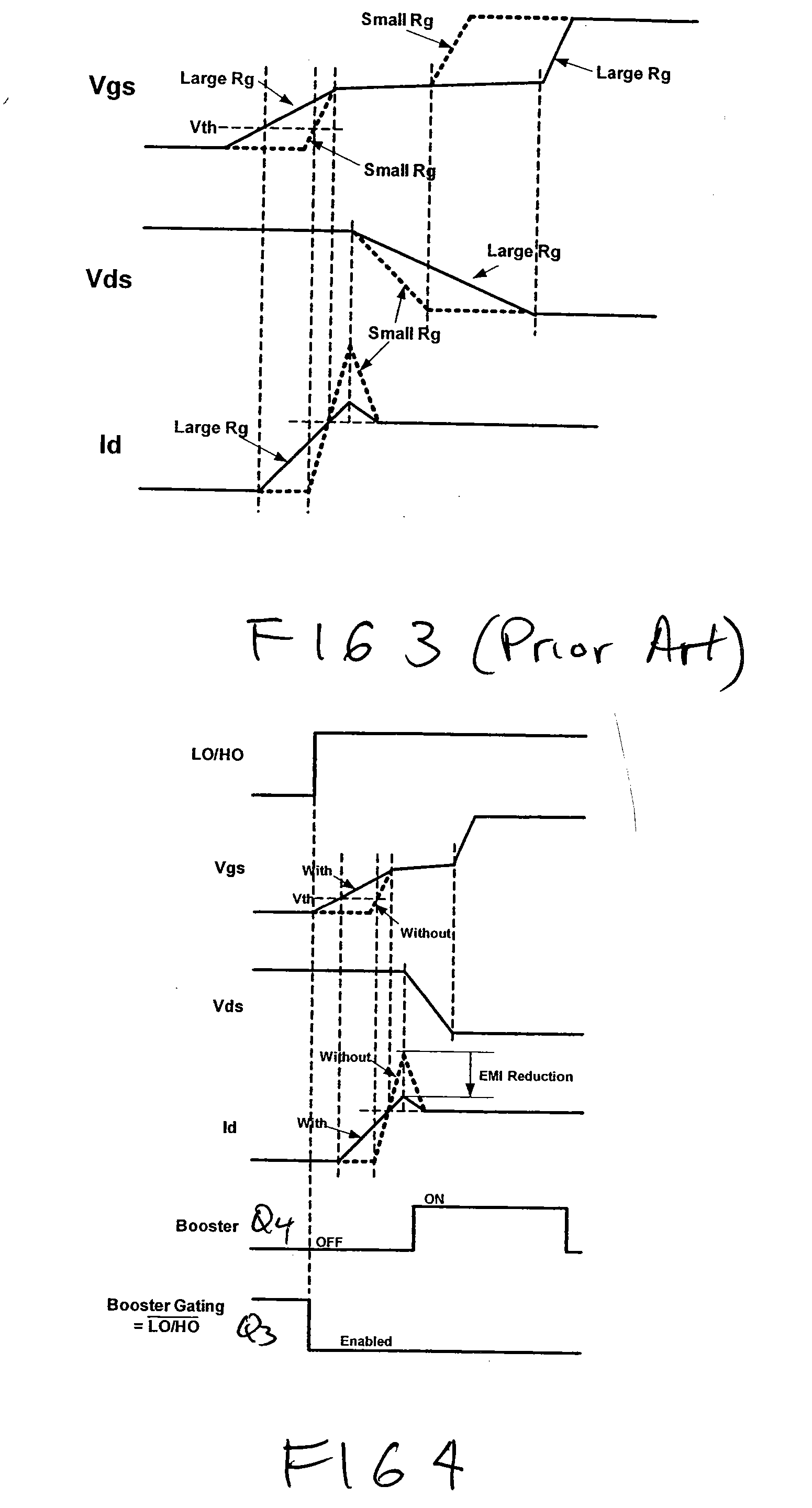Gate drive for lower switching noise emission
a gate drive and noise emission technology, applied in logic circuit coupling/interface arrangement, pulse generator, pulse technique, etc., can solve the problems of significant switching loss increase and harmful ringing, and achieve the effect of reducing emi, reducing switching losses, and reducing the magnitude of qrr itsel
- Summary
- Abstract
- Description
- Claims
- Application Information
AI Technical Summary
Benefits of technology
Problems solved by technology
Method used
Image
Examples
Embodiment Construction
[0021] With reference to FIG. 1, the gate drive circuit of the invention comprises two current sourcing switches, e.g. FETs Q2 and Q4. Q2 is smaller than Q4 and sources less current. Transistor Q1 is driven in complementary fashion to Q2 by the inverter INV2. The common node between Q1 and Q2 drives the gate of the power MOSFET Q6, here shown as the low side switch, but the circuit is applicable to the high side power MOSFET Q5 also. Q5 and Q6 comprise a typical half bridge output stage, driving the load indicated as inductor L, capacitor C and resistor R across which VOUT is generated. The load may be, for example, a loudspeaker of a Class D audio amplifier.
[0022] A supply voltage VCC is provided to power the driver. A transistor Q3 acts as an enabling stage to allow the booster transistor Q4 to be turned on only when the LO signal is high, i.e., when LONOT is low. An RC circuit comprising a resistor R1 and capacitor C1 acts as a dv / dt detector.
[0023] Again turning to FIG. 1, ass...
PUM
 Login to View More
Login to View More Abstract
Description
Claims
Application Information
 Login to View More
Login to View More - R&D
- Intellectual Property
- Life Sciences
- Materials
- Tech Scout
- Unparalleled Data Quality
- Higher Quality Content
- 60% Fewer Hallucinations
Browse by: Latest US Patents, China's latest patents, Technical Efficacy Thesaurus, Application Domain, Technology Topic, Popular Technical Reports.
© 2025 PatSnap. All rights reserved.Legal|Privacy policy|Modern Slavery Act Transparency Statement|Sitemap|About US| Contact US: help@patsnap.com



